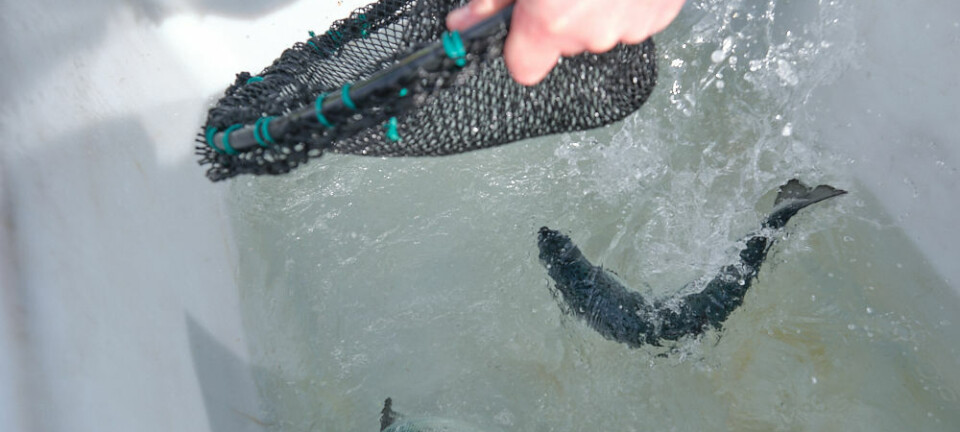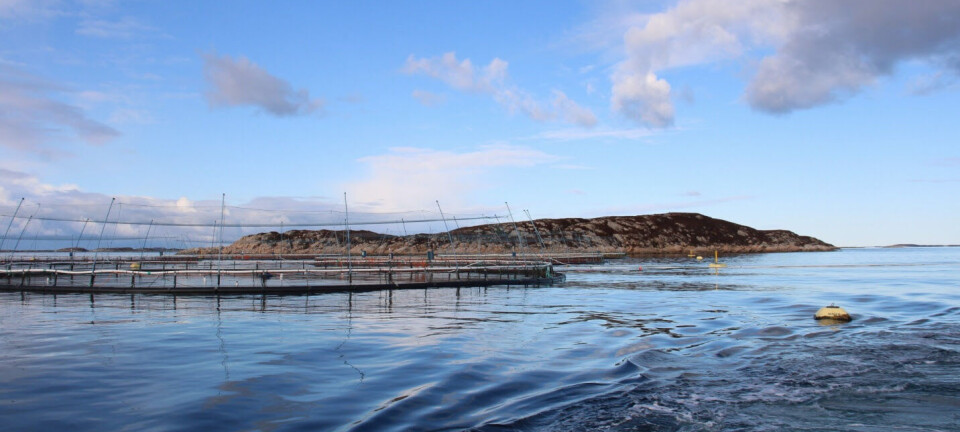
Breakthrough in understanding the biology of Parvicapsula
The final host of Parvicapsula pseudobranchicola has been identified. It's a step towards managing parvicapsulosis in aquaculture.
The ParviLIFE project, funded by the Norwegian Seafood Research Fund (FHF) is an international collaboration which aims to create a basis to establish practices for preventing and managing parvicapsulosis, a disease affecting Atlantic salmon in sea pens.
Parvicapsula pseudobranchicola is a microscopic myxozoan parasite that has a two-host life cycle, i.e. salmonids and a polychaete species. Small floating actinospores are released to the water from the polychaete host and are infective to the fish, while a very different type of spore (myxospore) develops in the fish, and is infective to the seabed dwelling worms.
Parvicapsulosis, the disease caused by P. pseudobranchicola, has been problematic in Norwegian salmon aquaculture for years, mainly in the northern parts (Nordland, Troms, Finnmark), causing a mortality up to 35%, although typical losses are lower. The main effect of the infections is the production of runts, fish that do not grow and tend to be removed and discarded.
Problem in Iceland
In recent years, parvicapsulosis has also become a significant problem in Icelandic aquaculture. While infections and the disease in salmonids are well documented, the alternative host (definitive host) has remained unknown, despite extensive research efforts to detect P. pseudobranchicola in various species of annelid worms. This lack of knowledge has limited further research on this disease.
However, a breakthrough recently occurred when P. pseudobranchicola was detected in high prevalence in a polychaete species inhabiting sediment in the vicinity of Icelandic salmon farms. This finding makes it possible to proceed with studies on this important parasite, e.g. its transmission, development and virulence and with a focus on avoiding or mitigating the disease parvicapsulosis in Norwegian and Icelandic fish farming.

Based on the recent knowledge on the alternative polychaete host, the ParviLIFE project was established. The project is funded by the Norwegian Seafood Research Fund (FHF) (project #901955). ParviLIFE started in the summer of 2024 and will end in 2028. The main objective is to create a knowledge base for future mitigation strategies for parvicapsulosis in Atlantic salmon aquaculture, i.e. to prevent or minimise the effects and losses in salmon farming due to this disease.
To reach that goal, detailed information on the biological characteristics and life cycle of P. pseudobranchicola is necessary. That includes mapping the distribution and density of the recently identified polychaete host, along with occurrence of infections in this host. Furthermore, the infection pressure in the environment will be examined, in relation to a presumable seasonal variation, and genetic variation of the pathogen within and between different geographic localities.
A challenge model will be developed to reveal the transmission mechanisms of the parasite, to examine details of its two-host life cycle.

The project has a great potential of being highly advantageous to the industry in the battle against parvicapsulosis. For example, new information on the final polychaete hosts and their densities in different bottom types or in relation to human influences could provide information on the risk posed by certain types of localities (environments) with respect to parvicapsulosis, with the potential for both avoiding areas with high worm densities and knowing where or at what time of year high infection pressures can develop.
The factors governing or affecting actinospore release from the polychaete host will also be elucidated, as well as knowledge on the longevity and vertical distribution of the spores. Such information can aid modelling of spread (e.g. farm interactions) and possibly the development of shielding strategies.
In addition, studies of the genetic variation can result in methods for detecting possible different variants of the parasite in both tissue and water samples (eDNA) and will improve the diagnostics of this pathogen.
In short, the potential direct mitigation strategies and applied outcomes that can arise from this project are:
- Avoidance: Avoid areas with high densities of the final host and/or habitat (bottom type, temperature) which these polychaete/s species prefer.
- Timing: Avoid stocking in periods of high infection pressure.
- Infrastructure: Use of modified sea pens, where the salmon are less exposed.

Furthermore, the project will give additional beneficial outcomes, such as increased knowledge on the genetics of the parasite (northern and southern strains?) and refined environmental DNA methods.
Preliminary results from Iceland suggest that the polychaete species serving as an alternative host for P. pseudobranchicola is widespread and abundant in the vicinity of sea pens. The prevalence of infection in the polychaetes varies between sampling times and sites but can be high (up to 70% of worms positive for the parasite).
ParviLIFE is a collaboration between the Institute for Experimental Pathology at Keldur (Keldur), University of Iceland, which leads the project, the University of Bergen, the Norwegian Veterinary Institute and the aquaculture companies Kaldvík (Iceland) and Cermaq (Norway). The key researchers in the project are Árni Kristmundsson and Ásthildur Erlingsdóttir from Keldur Iceland, Egil Karlsbakk from the University of Bergen, and Haakon Hansen at the Norwegian Veterinary Institute.
























































